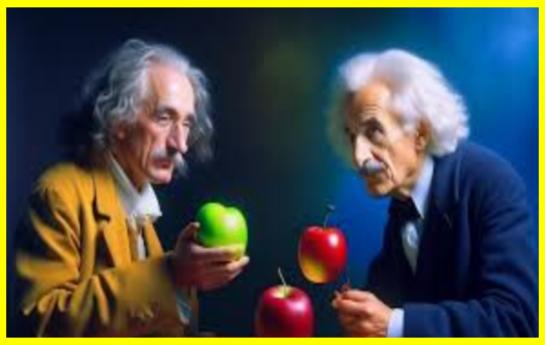Newton vs. Einstein: Why does the apple fall?
Let’s imagine an apple that falls from a tree.
According to Newton, it falls because the Earth attracts it with a certain force.
This gravitational force is proportional to the mass of the apple and the Earth and decreases as the distance between them increases.
For Newton, gravity is an invisible force acting at a distance that causes the apple to move downward.
Einstein offered a different view. In his general theory of relativity, gravity is not a force but a consequence of the curvature of space and time.
The mass of the Earth deforms space-time around itself, and the apple, being in this curved region, “slides” along this curvature like a ball on an inclined plane.
It falls because its trajectory in curved space inevitably leads to a collision with the ground.
The difference is that Newton says: the Earth pulls the apple downward by force, while Einstein says: the apple simply moves in a straight line in curved space, and therefore falls.
In everyday life, the two explanations may seem similar, but not on a scale like black holes or gravitational lensing.
Einstein’s model reveals much deeper aspects of the nature of gravity.
A great visualization of the two physical models of gravity.





















